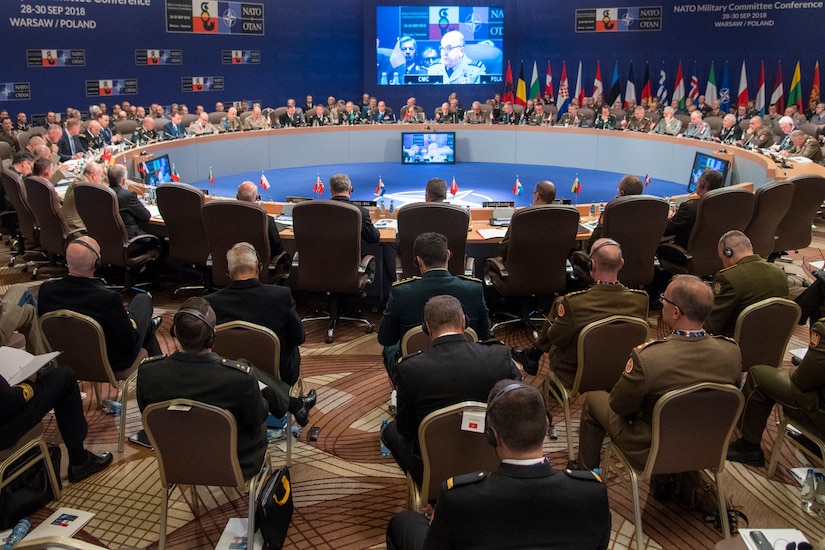By Jim Garamone, DoD News, Defense Media Activity
WARSAW, Poland -- NATO chiefs of defense will discuss the
alliance’s full range of challenges, operations and processes as part of the
Military Committee meeting here today.
Marine Corps Gen. Joe Dunford, the chairman of the Joint
Chiefs of Staff, joined 28 other alliance chiefs as the committee looked at
Afghanistan, the threats from the south and operations to deter Russia.
British Air Chief Marshal Sir Stuart Peach, the new chairman
of the Military Committee, said the alliance faces “an unpredictable and fluid
environment, with many challenges and developing threats posed by state and
nonstate actors in the traditional domains of land, sea and air, as well as
hybrid warfare and cyberattacks.”
Peach reminded all that the chiefs of defense work together
under the alliance structure “to safeguard the security of 1 billion citizens
on both sides of the Atlantic.”
At the beginning of the meeting, the chiefs observed a
minute of silence for the NATO troops killed in the line of duty since the
Military Committee last met in May. Three Czech soldiers and two American
soldiers made the ultimate sacrifice in Afghanistan.
The chiefs will first look to missions and operations.
Almost 20,000 NATO military personnel are engaged in operations around the
world in complex ground, naval and air operations in all types of environments,
Peach said.
Unwavering Commitment
The two main efforts are in Afghanistan and the new training
mission in Iraq.
“Our commitment to Afghanistan is unwavering,” the air chief
marshal said. “The security situation remains challenging. Nevertheless, the
Afghan national security forces are working hard to secure their country and
deny a safe haven to terrorists.”
In Iraq, NATO continues to support the Iraqi government and
its efforts to stabilize the country and fight terrorism in all its forms and
manifestations, he said.
The meeting’s second session will focus on NATO military
strategy. “As the alliance adapts and modernizes in line with political
decisions and guidance, the Military Committee needs to ensure the alliance
continues to have an overarching framework to promote a common understanding of
NATO’s military goals, intended approaches and resource requirements,” Peach
said. “The alliance does not have the luxury of deciding which security threats
we face, so we must be able to operate across all domains now and in the
future.”
Resilient Posture
The third session will focus on readiness, responsiveness
and reinforcement, as the military chiefs look to ensure the alliance’s
deterrence and defense posture remains credible, coherent and resilient. “It is
of strategic importance to improve responsiveness, heighten readiness and
improve reinforcement,” he said.
NATO’s readiness initiative will ensure that more
high-quality national combat forces will be available to NATO, quickly, the
committee chairman said. “From within the pool of forces, allies will offer an
additional 30 naval combatants, 30 heavy or medium maneuver battalions, 30
kinetic air squadrons with enabling forces at 30 days readiness or less,” he
said.
The final session will look at NATO’s modernization, command
structure adaptation and headquarters functional review.

No comments:
Post a Comment